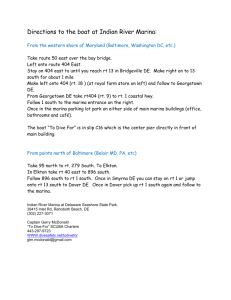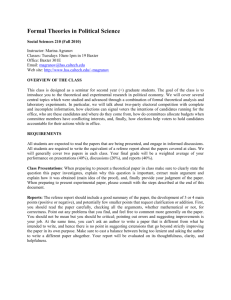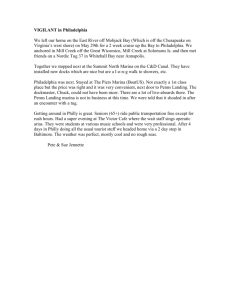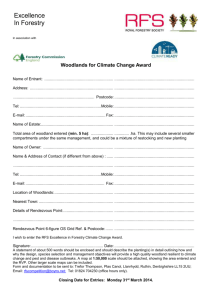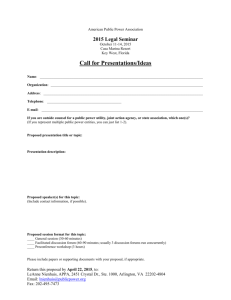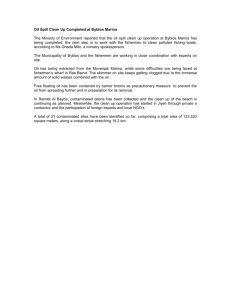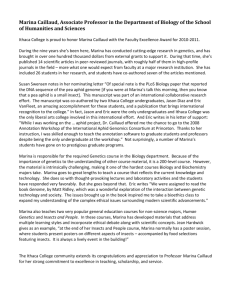Feedback on the Gardens by the Bays Designs
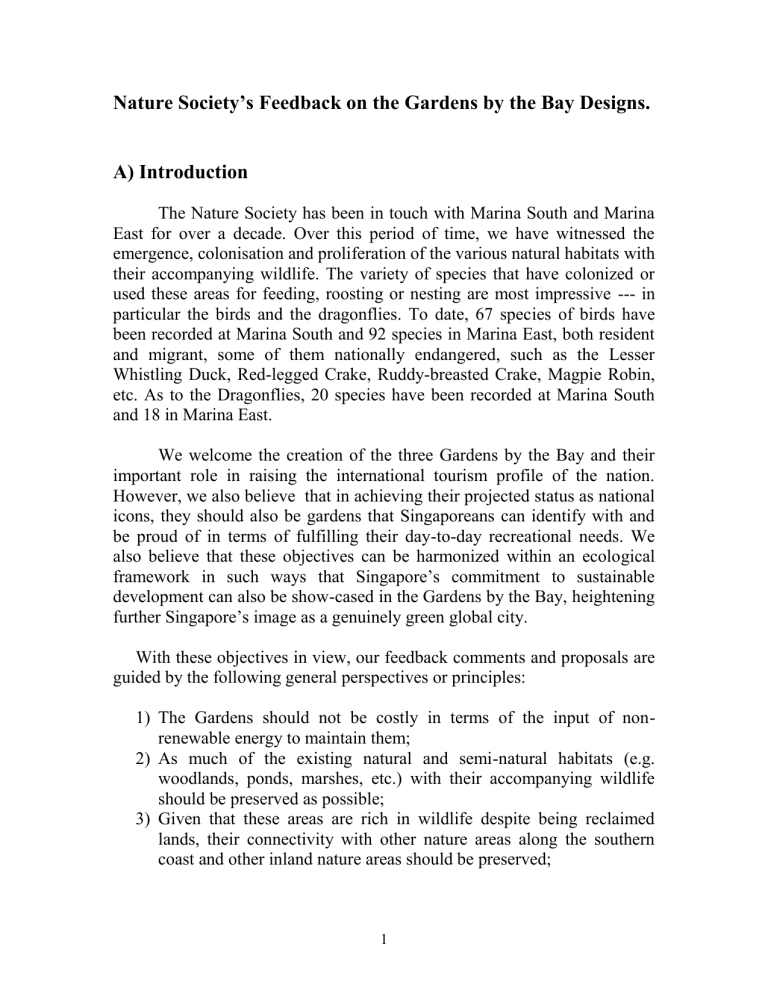
Nature Society’s Feedback on the Gardens by the Bay Designs.
A) Introduction
The Nature Society has been in touch with Marina South and Marina
East for over a decade. Over this period of time, we have witnessed the emergence, colonisation and proliferation of the various natural habitats with their accompanying wildlife. The variety of species that have colonized or used these areas for feeding, roosting or nesting are most impressive --- in particular the birds and the dragonflies. To date, 67 species of birds have been recorded at Marina South and 92 species in Marina East, both resident and migrant, some of them nationally endangered, such as the Lesser
Whistling Duck, Red-legged Crake, Ruddy-breasted Crake, Magpie Robin, etc. As to the Dragonflies, 20 species have been recorded at Marina South and 18 in Marina East.
We welcome the creation of the three Gardens by the Bay and their important role in raising the international tourism profile of the nation.
However, we also believe that in achieving their projected status as national icons, they should also be gardens that Singaporeans can identify with and be proud of in terms of fulfilling their day-to-day recreational needs. We also believe that these objectives can be harmonized within an ecological framework in such ways that Singapore’s commitment to sustainable development can also be show-cased in the Gardens by the Bay, heightening further Singapore’s image as a genuinely green global city.
With these objectives in view, our feedback comments and proposals are guided by the following general perspectives or principles:
1) The Gardens should not be costly in terms of the input of nonrenewable energy to maintain them;
2) As much of the existing natural and semi-natural habitats (e.g. woodlands, ponds, marshes, etc.) with their accompanying wildlife should be preserved as possible;
3) Given that these areas are rich in wildlife despite being reclaimed lands, their connectivity with other nature areas along the southern coast and other inland nature areas should be preserved;
1
4) In the planting schemes required, native plant species (found within the Malay Peninsula) should be used instead of species that are alien and which would require high maintenance and energy input to sustain in healthy growth;
5) The gardens created should cater not only to tourists but also to
Singaporeans as a places to relax and to recreate with their friends and families.
6) The gardens, at least each within its own boundary, should have esthetic merit in terms of scenic value, harmony of elements and structures and a pleasant ambience.
B) The Marina South Design
1. General Appearance
There are too many features and structures put into this area to the extent that it looks and would feel rather cluttered. It looks more or less like a theme park --- not a place where one can come to relax and unwind and recreate with self-generating activities.
2. The Designed Waterbody
From the design, the existing pond will be enlarged and shifted further eastwards. The enlargement of the pond is a good thing as it will be provide potentially more space for wetland wildlife such as birds & dragonflies. But its implementation will require excavating and earth-filling work causing disturbances to the existing wildlife. Wetland bird species residing in or using the pond habitat are: Lesser Whistling Duck, Chinese Pond Heron,
Yellow Bittern, Purple Heron, Ashy Tailorbird, Collared Kingfisher,
Common Moorhen, Oriental Reed Warbler, White-breasted Waterhen, etc.
The Lesser Whistling Duck is a nationally threatened species, while the
Purple Heron is a nationally near-threatened species.
The edge of this new waterbody should not be concretized at all. It should have a more subtle shaping around the pond edge including low undulating margins and tiny pools. Low slope at the water edge gives a much better pond profile and allows a much richer plant and invertebrate communities to develop. Marshy segments in the quieter stretches should be
2
created for the wetland birds and dragonflies. Generally, the waterbody should be planted with a wide variety of native submerged, floating-leaved and emergent plants (such as those found in the existing marshes) to give a mosaic of plant architecture that will increase dragonfly diversity.
We propose that an alternative marshy pond be catered for the birdlife of this pond as an interim measure during the construction. Such a pond can be created in the marshy area at the bend where Marina Boulevard turns into
Marina Coastal Drive.
This waterbody should not be used at all for water-taxi transportation as this would be extremely disturbing to any wetland wildlife. Having a water-taxi station at the northern end of the waterbody fronting the Marina
Channel is good enough. Visitors should be encouraged to walk around the area or alternatively electric-powered trams could be used instead as in the
Singapore Zoological Gardens.
3. Woodland in the Quadrangle east of Marina City Park
In the design, a major portion or all of this very mature woodland will be erased and a new road designated by the name “Curve Road” will run through it. This is most unfortunate as the woodland is the home for a variety of birdlife such as the Rufous-tailed Tailorbird, Black Baza, Bluethroated Bee-eater, Laced Woodpecker, etc., and butterflies such as the very rare Common Tiger. As this is incorporated into the Garden, we propose that it should be left entirely as it is to provide a green natural backdrop to the garden and as a buffer for the housing estate planned for the remaining area in that sector. Moreover, it will help to cool down the ambient temperature.
4. The Super Trees
This cluster of artificial structures are obtrusive, if not eye-sores, equivalent to the ‘Durians’. If you need a structure to capture solar power, one would be sufficient. If you need water-storage, creating more ponds will be better as they can be also ideal for freshwater wildlife habitats. These waterbodies will also be visible and if designed nicely will also have scenic value. We understand that creepers will be planted to creep up the wire scaffolding and network on top to give a ‘tree’ look to them, but this will only lead to an untidy look to the structures unless they are pruned regularly, which will be a high maintenance affair.
3
5. The Conservatories
As these conservatories are high energy and high maintenance features, we propose that one of them will be enough and we recommend that the cool dry conservatory (showcasing Mediterranean plantlife) be discarded. The cool moist conservatory (Cloudy Mountain) should showcase plantlife of tropical montane habitat of the region such as Mount Kinabalu.
6. Other Recommendations
The Garden could be further improved in terms of attracting the local biodiversity by: a) Apart from existing woodlands, retaining all the big trees standing individually in the more open area as well; b) Planting Banyan and other native fig trees here and there to provide greenery and shades and to attract the birdlife; c) Creating unconcretised streams weaving through the area --- apart from the large pond to be created at the western sector;
C) The Marina East Design
1. General
The Marina East area is a wooded stretch running from the East Coast
Park in the Tanjong Rhu area down to the coast and from there connecting with the stretch of woodlands along the seafront all the way to the East
Coast Park again. The woodlands along these stretches, although of recent origins, are important as refuge in the city for many resident and migrant birds and butterflies. Of the birdlife haunting these woodlands, we have such species as the Changeable Hawk Eagle, Blue-throated Bee-eater, Magpie
Robin, Barn Owl, Black-winged Kite, etc., among the residents, and the
Crow-billed Drongo, Chestnut-winged Cuckoo, Black Baza, Oriental Honey
Buzzard, Large Hawk Cuckoo, Asian Paradise Flycatcher, Tiger Shrike, etc., among the migrants. Preserving these woodlands would preserve an important habitat for migrant and resident birdlife in the city, as well as the connectivity for the birdlife between the Southern Ridges and the East
Coast Park.
4
It is good that the garden design here has a less cluttered feel to it with less of the artificial structures being imposed. The creation of the Food and the Water Garden are all a good part of the design.
2. Preserving the Existing Woodland
From the design, we see that a large portion of the existing woodland will be eliminated to be replaced by rows of neatly planted trees. Even the retained portions of woodlands are cut up and shaped in narrow strips.
Worst, these strips have no connectivity with one another. These imposed shapes and configuration of the woodlands are extremely dis-ecological.
We here propose that a belt of woodlands be preserved along the golfcourse boundary from the Benjamin Sheares Flyover to the mangrove patch at the coast to provide a habitat and green corridor for the existing wildlife in the area. The width of this woodland belt will taper gradually towards the sea, with the larger portion nearer the Benjamin Sheares Flyover. A good demarcation for this green belt will be all the woodlands standing to the east of the existing track running from the north to the south
This woodland belt will provide a cooling influence to the garden. It will also act as a buffer between the golf-course and the garden and will be valued from either perspective. Aesthetically, it would provide a pleasant backdrop to the garden here as seen from the other side of the Marina
Channel, otherwise the garden here will look too harsh and bare and hot during the mid-day hours. The woodland will also form a surfacewater catchment and will be important for the creation of surfacewater-fed ponds and streams.
Given this configuration of the woodlands, the construction or artificial features will be aligned more to the waterfront side from the north to the south. A cycling cum walking- jogging trail can use the existing track and be made to weave here and there through the woodlands.
3. The Aquadetum
We are not against the having of such an attraction but the
Aquadetum is too large a feature for such a small area. The result is that it sits athwart the garden from the shoreline to the golf-course causing the
5
large part of the continuous belt of woodland to be shaved off and divided, breaking its continuity. Also the flow of people’s movement from the north to the south and vice versa --- whether jogging, cycling or strolling --- becomes rather cramped at this point.
We propose that the Aquadetum be located at Marina South instead where the garden design is more structured and built-up. If this is not possible, it should be reduced in size to half its extent or that it be built jutting out into the Channel to some extent.
If so, it should also be located to the southern end, closer to the
Barrage, so that it will have a close link to the other structural attractions coming up at the Marina South side of the Barrage.
4. Dragonfly Pond & Stream
Instead of the Aquadetum, we strongly urge that a Dragonfly Pondcum-Stream be created in this area. Dragonflies have colonized the marshy areas of Marina South and East in great numbers and varieties, a couple of which are uncommon species ( Diplacodes nebulosa & Rhyothemis triangularis ) and one rare critically endangered ( Indothemis limbata in the
Red Data Book.) These highlighted species are doing pretty well in these areas. But the areas where there are found will most likely be destroyed by the planned housing, expressway developments, etc., coming up. Creating new waterbodies provides a habitat for these species. By leveraging on the close proximity to the existing wetlands, and by incorporating aquatic features such as a varied mosaic design (ponds with different depths) and a mix of submerged and emerged vegetation, the pond-cum-stream dragonfly community is likely to be good, and will provide a delightful experience to children and visitors alike.
In fact, this is put into the design at Marina east by the winning designer for Marina South, which is excellent. The size of the pond should only be half of the area taken up by the designed Aquadetum. The creation of the stream or inland water channel can follow the existing monsoon drain running at the edge of the existing belt of woodlands. The pond and the stream can be mainly fed by surfacewater, like the existing ponds in Marina
East. To do so, the most critical factor is to ensure that the pond and stream has a good buffer zone of woodlands to provide high quality water source
(as opposed to road runoff which are highly polluting). The retained
6
woodland will also provide important feeding and roosting sites for adult dragonflies.
4. Attracting the Coastal Birds
The Marina Channel is the haunt of several spectacular species of birds of prey hunting along the coastal waters, like the Osprey, White-bellied
Fish Eagle, Brahminy Kite, etc. They could be made a prominent and exciting feature of both gardens if perching stakes could be erected near the banks of the Channel.
5. Other Recommendations a) We propose that hotels and chalets should be disallowed in the area as it is too small to accommodate such features; b) Any marathon and mass-jogging (school-sessions) route should not be allowed to run right smack into garden but should use the new road that is now servicing the golf course; c) There should be a small open-air type food-centre set up, otherwise visitors will have to go a long distance for their refreshment and meals.
D) The Marina Central Garden
There is no design for this area given yet. We learn that the design for this garden will be open to only local designers. This is good and in fact should also be the case for the garden at Marina East as well, because this segment is well-connected with the locally very popular East Coast Park and would be regarded as an extension of that Park by local users. Of course this is too late, but we hope that local input in the feedback sessions will be taken seriously as locals will be the people who have to live with these gardens come rain or shine, global economic downturn or not. For the future, we propose that Singaporean feedbacks should be gathered prior to any kind of big design competition so that the needs and perspectives of the local people on the project can be elicited and determined beforehand --- before seeking international inputs and ideas.
We have learned that the theme for this stretch will be slanted towards watersports and seafront activities. We have no objection to this orientation for the garden here.
7
However, once again we urge that the existing belt of woods be preserved as this stretch of greenery is the only green corridor available for wildlife connectivity through the heavily built-up zone of the Kallang Basin and Jalan Besar to the Central Catchment Forest in the heart of Singapore.
Such a green corridor if pushed all the way through can lure Oriental Pied
Hornbills now making a comeback in the Central Catchment to the city. This will certainly inject a tremendous attraction and enchantment to the Gardens by the Bay worthy of their projected image as world-class gardens and of
Singapore as a city of tropical excellence.
--------------------------------------------------------------------------------------------
Acknowledgement: This report is formulated by the Conservation
Committee on behalf of the Nature Society (Singapore) and is endorsed by the Society’s Council & EXCO. The Conservation Committee would like to thank the following members for contributing their views, ideas and/or feedback to the report: Angie Ng, Cheong Loong Fah, Geh Min, Goh Si
Gium, Ho Hua Chew, Shawn Lum, Vilma D’Rozario & Willie Foo.
8
